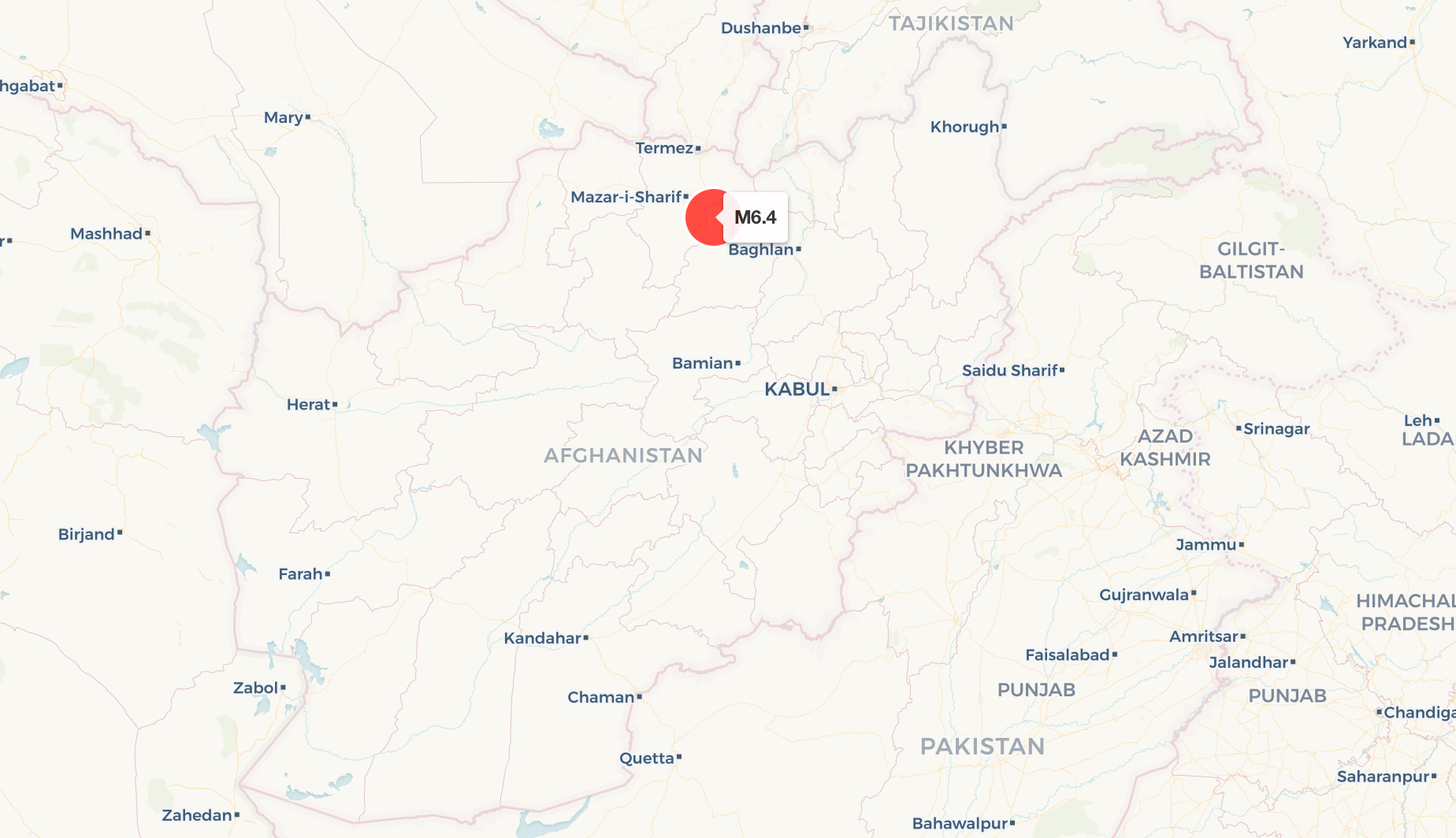
Magnitude 6.4 earthquake strikes northern Afghanistan
A powerful earthquake measuring magnitude 6.3 struck the Hindu Kush region of northern Afghanistan late Saturday, according to international geological surveys.
November 2, 2025 - 05:06 PM ET • 2 min read
A powerful earthquake struck the Hindu Kush region of northern Afghanistan late Saturday, according to international geological monitoring agencies.
The epicenter was located in a sparsely populated area, approximately 35 kilometers southwest of the city of Khulm, Afghanistan.
The United States Geological Survey (USGS) reported the earthquake registered a magnitude of 6.3. The event occurred at approximately 20:28 UTC (1:58 AM local time Sunday). Other monitoring bodies, including the GEOFON network operated by the GFZ German Research Centre for Geosciences, placed the magnitude slightly higher, at 6.4.
There was no immediate information available regarding potential casualties or structural damage in the affected region. The specific location of the epicenter, near the border of Balkh and Samangan provinces, places it in a region characterized by rugged terrain and traditional mud-brick construction, which is highly susceptible to collapse during intense shaking. The proximity to Khulm, a historical city, raises concerns about potential impacts on older structures, though official assessments of damage remain pending.
The Hindu Kush mountain range, where the tremor originated, is one of the most seismically active zones globally. This activity is driven by the ongoing collision between the Indian and Eurasian tectonic plates. The Indian plate is slowly pushing northward beneath the Eurasian plate, resulting in significant crustal deformation and frequent seismic events throughout Afghanistan, Pakistan, and Tajikistan.
Afghanistan is highly vulnerable to seismic hazards. The country’s infrastructure, particularly in rural areas, is often poorly equipped to withstand strong shaking. The region has a history of devastating earthquakes, including a series of deadly quakes that struck western Afghanistan in October 2023, resulting in thousands of fatalities and widespread destruction. The frequency of seismic activity necessitates constant vigilance and preparedness measures across the northern and eastern parts of the country. International agencies are relying on remote sensing and local reports to gauge the full impact of the magnitude 6.3 tremor.